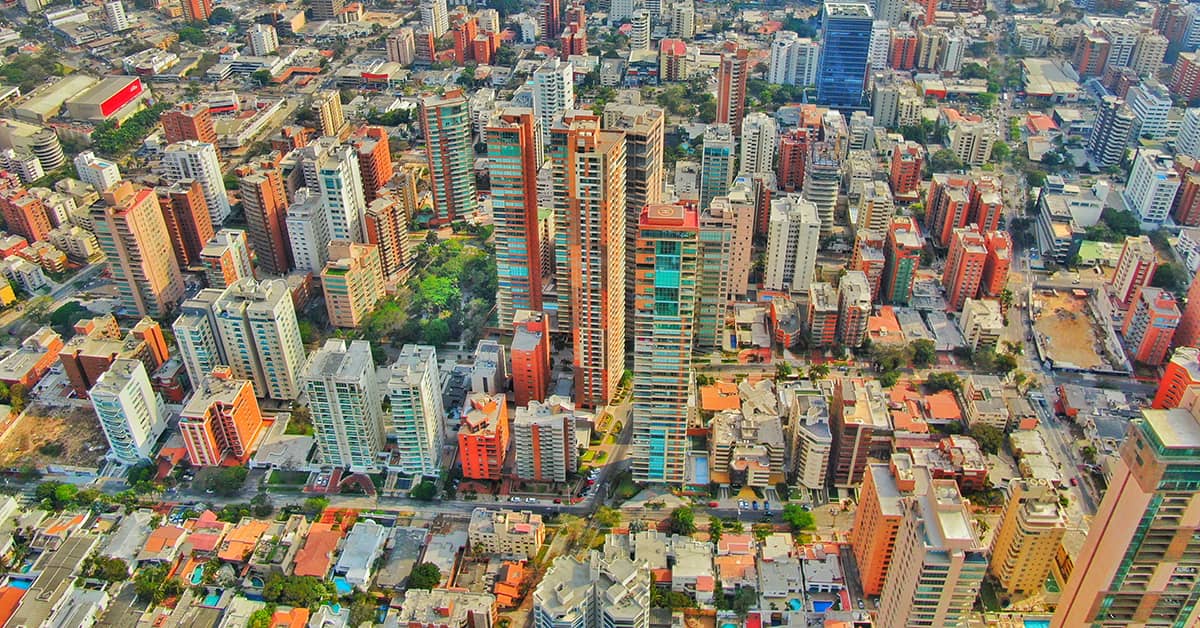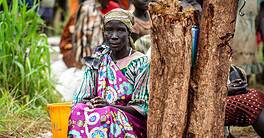Struggling to control Covid-19 and obtain vaccines, Latin American governments are hoping commodities exports will pull them through.

This year is shaping up to be one of the most challenging in decades for Latin America. Optimism stemming from the positive growth of the fourth quarter of 2020 bumped up against a second wave of Covid-19 infections in the first months of 2021, reducing space for fiscal action. That makes it uncertain whether governments can maintain policies in support of the most vulnerable people and small companies while also amassing an adequate volume of vaccines, a key element for economic recovery.
Nations in the region are focused on boosting their competitive sectors, especially the commodity exports’ rising prices, although some are engaged in tax, fiscal, judicial and administrative reforms that could diminish their attractiveness to business in a post-pandemic era.
The Andean nations are looking to increase revenue from their mining and oil/gas sectors, as tourism isn’t expected to return in the short term. Brazil and Argentina are clinging to their agribusiness production, as the manufacturing and services sectors still walk a tightrope. Mexico hopes to benefit from implementation of the new United States-Mexico-Canada Agreement on trade.
Happily, the region is not experiencing balance of payments troubles. But considering its poor growth performance over the past decade, lack of productivity and rising poverty and inequality, most projections of partial economic recovery in 2021 merit a skeptical look. Currently, both the World Bank and the UN’s Economic Commission for Latin America and the Caribbean (ECLAC) estimate 3.7% growth this year following the -6.9% to -7.7%, respectively, estimated for 2020.
“The key point is that 3.2% growth isn’t enough to compensate for the strong fall in the region’s GDP,” says Daniel Titelman, director of the Economic Development Division at ECLAC. “It’s not genuine growth. In an optimistic scenario, we expect recovery to the 2019 levels only in 2023 or 2024.”
While the region faces a new Covid-19 wave “with no ammunition,” as Eric Parrado, chief economist at the Inter-American Development Bank (IADB), says, “it must pass reforms to seek a more sustainable fiscal structure, a more open business market and access to international capital flows. There is no more time to postpone these changes.”
These actions will be the center point of the IADB’s annual meeting in Barranquilla, Colombia, this month. The bank also expects to raise its annual lending capacity from $12 billion to $20 billion with the support of the US and other developed countries to address the region’s increasing demand for infrastructure, energy and social projects.
Extension of emergency aid for the poorest, the unemployed and small companies will play a key role in boosting domestic consumption: the mainspring of growth at this point. Despite market unease, Brazilian President Jair Bolsonaro is considering a new round of emergency aid for the country’s poorest. Even in default on bond payments and amid negotiations with the International Monetary Fund, Argentina has maintained social aid.
Brazil: Reform on the Backburner
Brazil, the biggest economy of the region, is absorbing the second heaviest hit from Covid-19 of any country in the world by the number of deaths due to the disease—accentuated by Bolsonaro’s failure to adopt many protective measures that other governments have implemented. Neither tax nor administrative reform is on the official schedule, despite international institutions’ and investors’ concerns whether the country can deal with its fiscal challenges. The primary deficit should reach 3.3% of GDP in 2021, and public debt now equals 95%, according to São Paulo–based macroeconomic consultants ,MB Associados.
Other widely recommended measures, like a privatization plan, are on the back burner despite support from the Ministry of the Economy. Instead, Bolsonaro has created three new military-controlled state companies, replaced the CEO of Petrobras (a state-owned Brazilian petroleum company) and criticized the mixed-controlled oil company’s pricing policies. Petrobras lost $20 billion of market value in only two days after Bolsonaro’s intervention. The government’s failure to enforce environmental policies against the destruction of the Amazon forests has also discouraged foreign investors from venturing back.
Spectre of De-Industrialization
Another red light flashed in January, when Ford Motor announced its departure after a century of production in Brazil, raising the specter of deindustrialization. Between 2015 and 2020, 36,600 manufacturing companies closed their doors in Brazil, of which 5,500 ended operations last year, according to the National Confederation of Commerce, Goods, Services, and Tourism (CNC).
“This fact could be avoided if Brazil’s structural costs, like tax, logistics and transportation, had decreased,” says Sergio Valle, chief economist at MB Associados. But that won’t happen absent government action. The World Bank and ECLAC project the economy will grow only 3% and 3.2%, respectively, this year: not nearly fast enough to counterbalance its plunge in 2020, which the two bodies pegged at -4.5% and -5.3%.
There are some hopeful signs. Despite uncertainties over legal and regulatory measures that compromise investment plans, Brazil is expecting good results from new private-sector concessions in ports, airports and sanitation services, including in construction and operation, and also from export of metals and agricultural commodities. A pivotal event will be the auction of 5G mobile connection rights, which could spur growth in the technology sector.
The Central Bank of Brazil, meanwhile, is pushing reforms to increase financial sector competition. Its efforts have already born fruit in the adoption of a real-time payment system last November; and the implementation of the country’s open-banking regulation, the first phase of which commenced last month.
Argentina: “Fintech’s Year”
In Argentina, where agribusiness complains that high taxes and limits imposed by the current government have hobbled its competitiveness, the tech sector is becoming more active. Unicorns like MercadoLibre, Prisma, Globant and OLX are launching a new wave of entrepreneurship.
“This will be fintech’s year,” says the economist Luis Secco, adding that this development could provide a critical boost to one of the smallest financial sectors in Latin America. Meanwhile, with the country’s hydroelectric power plants suffering from drought, the government is betting on a concession program that authorizes private companies to build and operate four new gas production plants.
Chile and Colombia: Positive Signs
Despite last year’s GDP collapse, Chile and Colombia emerged comparatively well positioned to face the next wave of the pandemic.
Colombia had one of the highest unemployment rates in Latin America last year, says José Antonio Ocampo, former Colombian minister of finance and public credit and now director of the Economic and Political Development Concentration at Columbia University’s School of International and Public Affairs. However, strong macroeconomic management, credit expansion, social aid; and growth in the financial services, health, agriculture, manufacturing and construction sectors helped the country avoid a deeper recession.
“Foreign investments are expected in the mining, oil, gold, manufacturing and financial sectors,” says Ocampo. “Colombia is a very open market.”
Chile, with close ties to China, is reaping benefits from the recovery in Eastern Asia—China should see 7.9% GDP growth this year, according to World Bank projections—including the fiscal space to extend the social measures it adopted in the face of Covid-19. Copper prices are already 49% above 2020 levels, improving prospects for exports. The process toward adoption of a new constitution will begin in April with the election of a Constituent Assembly, followed by a ratification plebiscite next year. In between, a presidential election will be held in November. The succession of events is no cause for concern, Titelman argues.
“Chile is a solid democracy,” he says, addressing the risk of a populist victory.
Rising populism, however, is expected to be a factor in elections elsewhere in Latin America this year—especially in Peru, where the two presidents previous to the incumbent were impeached and deposed, respectively—and the effects of the pandemic strongly reverberate. Ecuador, Nicaragua and Honduras will also have an opportunity to choose new presidents; while Argentina and Mexico face midterm elections. With poverty and inequality growing, political unrest could make a regional economic recovery even more difficult.



